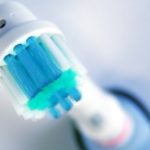Electric toothbrushes, in comparison with traditional non-mechanical analogues, demonstrate higher rates in oral care, remove plaque better, more effective in combating signs of gingivitis (both in the long and short term). But with all the comfort and convenience, in order to achieve the maximum therapeutic and prophylactic effect and not damage the teeth, the decision - which is the best to choose an electric toothbrush - will require taking into account a very large number of parameters.
Design features
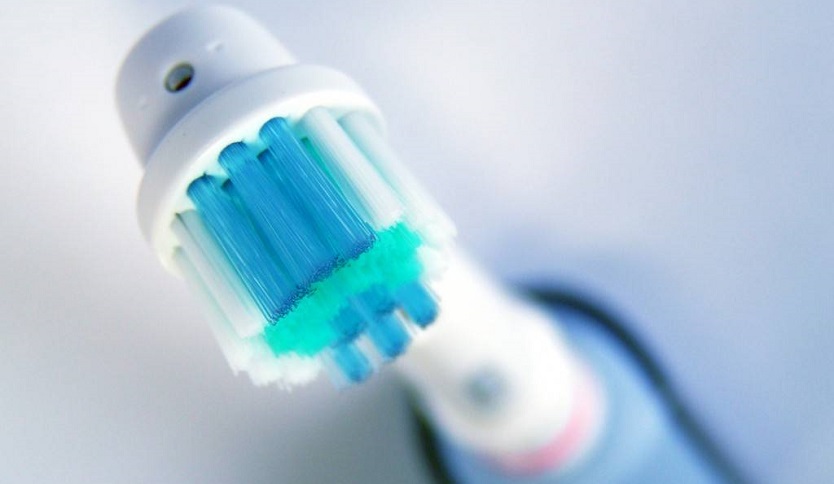
Structurally, an electric toothbrush consists of the following parts:
- handle - it houses an electric motor with a power source, as well as a control unit.
- barrel-holder, on which the brush head is attached.
- The brush head (nozzle) is the most important part of the brush. In budget models, they can only perform reciprocating movements. The more expensive the model, the more functions the head can perform, for example, make rotational or pulsating movements, plus cleaning modes that are different in intensity. Models of the middle and premium class are equipped with several types of heads at once - for polishing teeth, for massaging the gums, for a delicate mode (required for teeth with increased sensitivity), for whitening, for double cleaning. There are special models of heads that can replace dental floss.
![]() See also - Braun Oral-B Genius 9000 Electric Toothbrush Review
See also - Braun Oral-B Genius 9000 Electric Toothbrush Review
Brush head stiffness
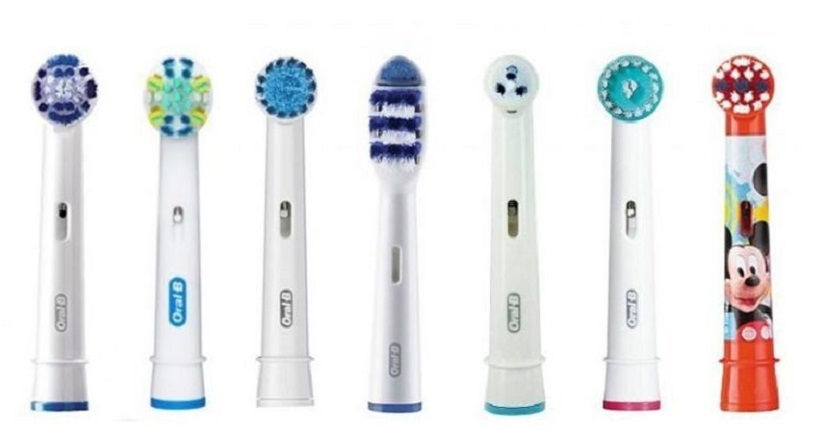
The advantage of an electric toothbrush can also be considered the fact that one device can be purchased, and removable heads can already be selected based on the features of dental care for each member of the family. The main parameter of the brush head is its rigidity. There are five standards:
- super soft - recommended for young children, as well as those who suffer from dental diseases and frequent bleeding gums.
- soft - this stiffness should be chosen for people who are prone to stomatitis and who have small wounds in the oral cavity.
- medium - for people with strong healthy teeth who do not have serious dental problems.
- hard - shown by those who want to restore the whiteness of the teeth, for example, lovers of strong tea and coffee, as well as smokers. In addition, this option is suitable for people who tend to develop tartar. Do not overuse the rigid nozzle and constantly monitor the condition of the teeth, because with systematic use, tooth enamel may become thinner.
- super-rigid - completely contraindicated for daily use.They can be periodically used by people who have braces or tooth plates installed - super-hard nozzles perfectly remove dirt accumulating around them. Too frequent use can damage the enamel and cause caries.
![]() See also - Tips for choosing an electric shaver for men
See also - Tips for choosing an electric shaver for men
What are the bristles made of?
The bristles are made of synthetic bristles - they are inexpensive and very smooth, they have a long service life and are free of pores. Heads with natural bristles are produced especially for allergy sufferers, but they have a number of significant disadvantages. First of all, they wear out quickly, so they have a short service life. They are soft, so their cleaning quality is much worse. At the same time, they are much more expensive and not very hygienic - natural hair is a breeding ground for intensive reproduction of bacteria.
Important:
The bristles wear out over time, so the head must be changed periodically. The need for replacement can be judged by the color of the bristles - as soon as they become dull and faded, it is worth buying a new head. On average, the nozzle should be changed every three months.
Depending on the type of electric toothbrush, teeth cleaning can be carried out by the movement of the head, or by vibration (vibration) of the bristles themselves (the head itself remains stationary). There are three types of electric toothbrushes.
![]() See also - What is the difference between a photo epilator and a laser epilator
See also - What is the difference between a photo epilator and a laser epilator
Standard
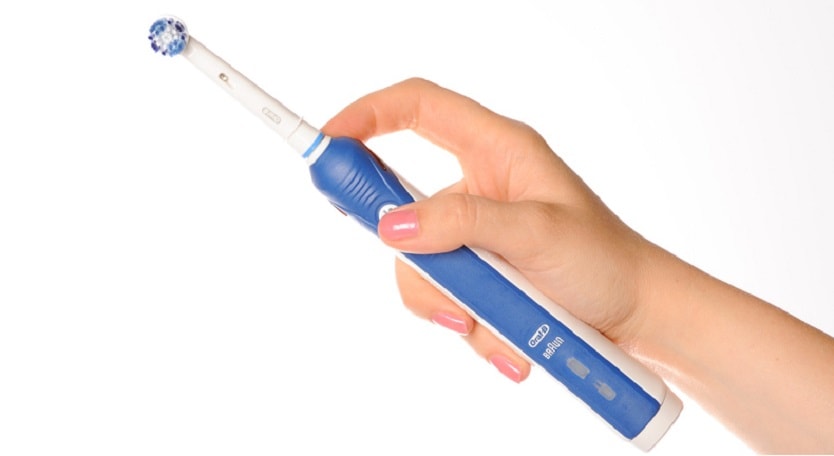
They are also called mechanical. For such brushes, the electric motor drives the brush head (nozzle) through the transmission element, which can perform both translational (forward backward) and circular movements (both clockwise and in the opposite direction). It is due to the movement of the head with the bristles fixed on it that the teeth are cleaned. The rotational speed for different models can vary from 5 to 30 thousand revolutions (movements) per minute.
The advantages of standard mechanical electric toothbrushes include affordable cost and gentle cleaning of teeth, which does not damage tooth enamel. But at the same time, in terms of the quality of cleaning, this type of brushes is significantly inferior to sound and ultrasonic analogues.
![]() See also - What is the difference between a trimmer and a clipper
See also - What is the difference between a trimmer and a clipper
Sound
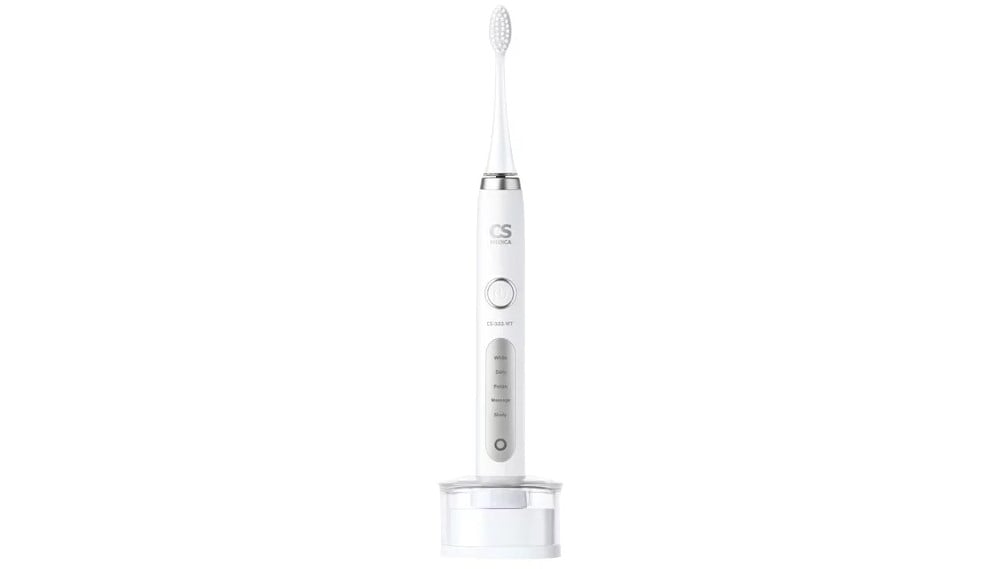
In electric toothbrushes of this type, the head remains stationary, the bristles themselves move directly. A special membrane converts the rotation of the electric motor into sound waves. Their vibration is transmitted to the villi of the brush, which begin to vibrate with great frequency. Thanks to this, a foam of uniform consistency is formed, consisting of toothpaste, air and water - this allows you to effectively and gently remove plaque even in the most inaccessible places. In this case, there is a double cleaning of the tooth surface - both directly due to the action of the bristles and due to the action of sound waves.
Other advantages can be noted:
- cleansing is gentle, without injuring the tooth enamel.
- the use of a sonic electric brush does not affect the fastening of braces, veneers, and does not cause the fillings to fall out.
- due to gum massage, microcirculation improves.
![]() See also - 18 best pokers by customer reviews
See also - 18 best pokers by customer reviews
Ultrasonic
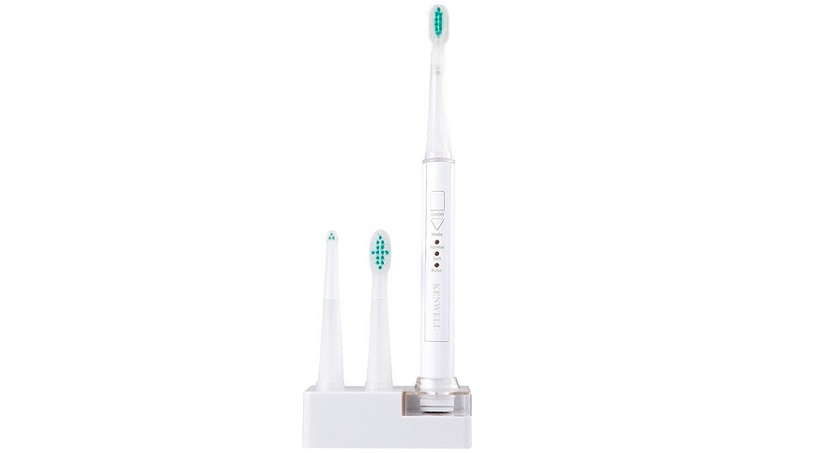
The principle of operation of ultrasonic electric brushes in general coincides with the operation of sound brushes. Their fundamental difference is in the frequency of oscillation of the villi. The electric motor converts the energy of electricity into waves of high - ultrasonic frequency, as a result, the device generates from 96 to 192 million vibrations per minute. The depth of propagation of ultrasonic waves from the bristle is no more than 5 mm. Thanks to the generated vibrations, tartar is effectively destroyed and removed, various plaques formed on the teeth - mineralized and pigmented.Also, pollution is eliminated in even the most inaccessible places where the fibers of an ordinary brush are not reached. In addition, ultrasound affects microbes, preventing their reproduction.
The use of an ultrasonic electric brush leads to heating of the dental tissue - this can be generally considered a positive point, because an increase in temperature leads to an acceleration of blood circulation in the gums. Other advantages of ultrasonic dental abacus include:
- the highest, in comparison with other types of electric brushes, the quality of teeth cleaning.
- economical use of toothpaste.
- no effort is required from the user - the brush simply needs to be brought up to the teeth.
However, the use of ultrasonic electric toothbrushes has a number of limitations:
- very high frequent vibrating bristles can cause seals to fall out due to destruction of the binder component.
- Ultrasonic brushes cannot be used by pregnant women, people with established pacemakers and bleeding gums. In addition, they cannot be used by children under 3 years old, those who have undergone oncological operations in the oral cavity, with high tooth mobility, insufficient enamel density.
- It is not recommended to use ultrasonic electric brushes for people who have crowns, veneers and other structures installed - a high vibration frequency can cause them to break.
Important:
Before buying an electric toothbrush, be sure to consult your dentist. Which, based on the condition and characteristics of your teeth and oral cavity, will recommend the best option for an electric brush.
![]() See also - Which iron is better to choose for home use
See also - Which iron is better to choose for home use
What to look for when choosing
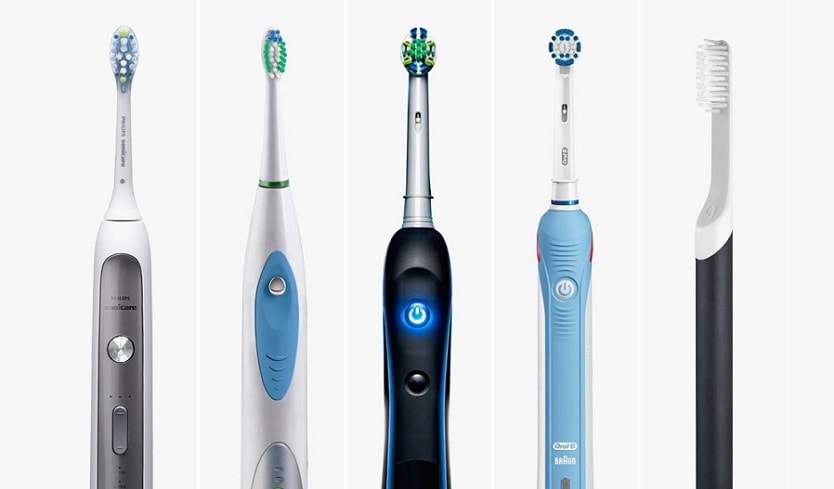
Nutrition
An electric toothbrush can have several power options:
- from the network - the least common option, as it significantly limits the consumer's mobility.
- from the battery - in this case, along with the device, a special charger is sold in the kit, where the electric brush must be installed after use for recharging. On average, a full charge of a new battery is enough for brushing your teeth by one person for a week - 20-30 minutes of work. The battery itself is fully charged within 2–5 hours (depending on its capacity), this will not cause inconvenience to the user, the time between brushing your teeth will be quite enough.
- from batteries - the brush is powered by conventional AA batteries. This option is suitable for those who travel a lot or move. The disadvantage can be considered the moment that you need to keep a spare kit at home in order to have something to replace the dead batteries.
Brush handle
To prevent the brush from slipping in a damp palm, it is advisable to have rubberized inserts on the handle.
Additional functions
To make brushing your teeth as comfortable and safe as possible, manufacturers equip electric toothbrushes with additional features:
- timer - precisely controls the observance of the cleaning time, which is especially important for ultrasonic brushes.
- pressure sensors - indicate too much pressure on the teeth / tooth enamel. This function prevents enamel erasure and gum injury.
- wear indicator - serves to signal the need to replace the brush head.
- some models are equipped with special attachments for cleaning the tongue.
- some models have an addictive function - it is suitable for those who first bought an electric brush. It lies in the fact that the load on the teeth increases gradually, in the first days the cleaning is very delicate and gentle so as not to cause discomfort.
Weight
The weight of a toothbrush should not be more than 200 grams; more massive models are very difficult to hold in your hand. For children, they produce special, more compact and lightweight models, but most importantly, before choosing an electric toothbrush for a child, it is necessary to find out the rotation speed - it should not be more than 18 thousand per minute.Otherwise, an additional load will be created, which can destroy the fragile enamel on children's teeth.
Manufacturer
When choosing a manufacturer, you should give preference to well-known brands that have proven themselves in the market. Such companies are not only engaged in the production of toothbrushes, but also constantly conduct oral hygiene research, so they can offer the most advanced and effective solutions. It is very important that they use only high quality materials for their manufacture. If we talk about any specific brands, then without a doubt it is Oral B, which is widely represented in all price categories. From other manufacturers it is worth noting Philips, Panasonic, Asahi, Donfeel. For children there are special models from the Japanese company Hapica, which have an additional built-in ionizer.
You can use an electric toothbrush (especially an ultrasonic toothbrush) no more than 1 time a day, so you still have to purchase an ordinary manual (manual) brush.
See also:


